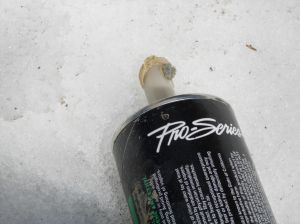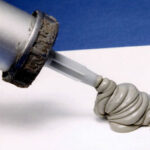Removing caulk makes the final difference in how well your new project comes out in the end. If you leave behind old caulk before you apply new caulk to a surface the bond will not be near as secure and the final product will look worn and unfinished. Caulk removal can be performed in a few different ways. Depending on your expertise, how much time you have to spend removing the caulk and how much effort you wish to put into the caulk removal you can choose one of three basic caulk removal options.
Caulk Remover
There are a few different types of chemical based caulk remover products on the market that you can purchase at home improvement stores such as Home Depot. For an easy job, caulk remover is the key but it causes the job to take about 6 hours–wait time for the chemical remover to actually work and break the caulk up.
I like to use 3M Caulk Remover. It’s rather inexpensive and it breaks the caulk up pretty quickly. Depending on the thickness of the caulk bead that you are trying to remove, the 3M remover will break it down in as little as 3 hours but can take up to 7 hours to fully work.
To use a chemical caulk remover such as 3M Caulk Remover, simply pour the remover product all over the bead of caulk. Make sure that the entire caulk bead is covered completely with a heavy layer of the remover and allow it to sit for up to 7 hours before gently scraping the caulk away with a plastic putty knife. This method of removing caulk works well because the plastic putty knife is less likely to scratch porcelain surfaces the way a razor knife would.
Caulk Removal Tools
To make the job even easier, there are a few different caulk removing tools that you can use to lift and pull the caulk from a surface. Homac makes a caulk removal tool that looks similar to a putty knife with a little tooth on it that gently digs underneath the caulk bead and pulls it from the surface. I don’t usually use the caulk removal tool only because I tend to misplace it in between jobs but other than that it’s a great tool.
The Homac tool is made from plastic just like a plastic putty knife so it won’t scratch most surfaces. I would recommend either the Homac tool or a plastic putty knife for anyone who is not skilled in home improvement projects and used to using a razor knife.
Removing Caulk with a Razor Knife
Finally, the method I probably use the most because it’s a tool that I always have on hand is removing caulk with a razor knife. This method of removing caulk is not preferred for most because there is an increased risk of damaging the surrounding surface with the knife but for me it works well. Simply use the razor knife to cut the bead of caulk out. Once you have loosened the caulk from the surface you can usually scrape it a bit and pull it from the surface. Again, this caulk removal method is for jobs in which the surface is not of much importance or for those who are skilled with a razor knife!




